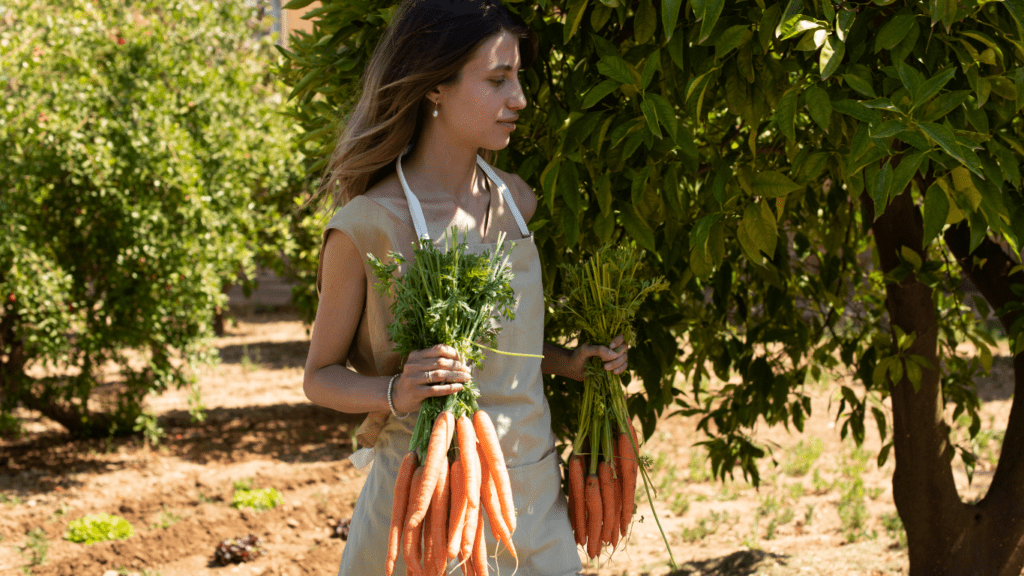The Historical Context of Organic Farming
Early agricultural practices relied on organic methods, using natural fertilizers and pest control. As modern science introduced synthetic chemicals in the early 20th century, conventional farming shifted away from these traditional techniques. Farmers adopted chemical pesticides and fertilizers, believing they could improve crop yields and efficiency.
In the 1940s, Sir Albert Howard and J.I. Rodale championed organic farming principles. Howard’s book, “An Agricultural Testament,” and Rodale’s establishment of the Rodale Institute laid the groundwork for the organic movement. They argued that healthy soil resulted in healthy plants and, consequently, healthier food.
The 1960s saw a resurgence of interest in organic farming. Rachel Carson’s book “Silent Spring” highlighted the adverse effects of pesticides on the environment and public health. This led to greater awareness and a shift in public perception favoring organic methods.
By the 1990s, government standards emerged. The U.S. Department of Agriculture (USDA) introduced the National Organic Program (NOP) in 2000, setting defined standards for organic farming and labeling. These regulations ensured consumer trust and promoted the growth of the organic market.
Today, organic farming continues to expand globally. The historical context underscores the importance of sustainable practices, revealing how past methodologies and advocacy have shaped the present landscape of organic agriculture.
Factors Contributing to the Rise of Organic Products
Numerous factors contribute to the growing demand for organic products in the agriculture market.
Environmental Concerns
Environmental concerns play a significant role in the rise of organic products. Organic farming practices promote soil health, reducing erosion and enhancing biodiversity.
Farmers avoid synthetic pesticides and fertilizers, minimizing chemical runoff into water bodies. This reduces pollution and helps protect aquatic life. Research by the Rodale Institute states that organic farms use 45% less energy and release 40% fewer carbon emissions compared to conventional farms.
Health Consciousness
Health consciousness drives many consumers towards organic products. Organic foods are free from synthetic additives, pesticides, and genetically modified organisms (GMOs).
This appeals to those who prioritize natural ingredients in their diet. Studies by the Environmental Working Group have shown that organic produce has a lower pesticide residue level. Many people believe eating organic reduces their exposure to harmful substances, even though no definitive evidence suggests organic foods are nutritionally superior.
Government Policies and Regulations
Government policies and regulations also impact the rise of organic products. The USDA’s National Organic Program (NOP) sets strict standards for organic labeling, ensuring consistency and consumer trust.
These regulations cover practices like:
- crop rotation
- animal welfare
- prohibition of synthetic chemicals
Several governments offer incentives such as subsidies and grants to encourage farmers to convert to organic practices. This support has helped increase the number of organic farms and the availability of organic products.
Economic Impact of Organic Agriculture
Organic agriculture’s economic impact spans various facets, from market growth to demographic shifts.
Market Growth and Trends
Organic farming markets have experienced substantial growth over the past decade. According to the Organic Trade Association, in 2021, the U.S. organic market hit $62 billion. This increase results from rising consumer demand for organic products and heightened awareness of health and environmental benefits.
Major supermarket chains are expanding their organic offerings, and new organic brands are continually entering the market. Organic food sales have grown by double digits yearly, overshadowing the growth of conventional groceries. Notable trends include increased sales in organic dairy, organic produce, and organic packaged foods.
Consumer Demographics
The demographic landscape of organic consumers is broadening. Previously, organic products attracted mainly health-conscious individuals. Now, younger generations, particularly Millennials and Gen Z, are driving market growth. Nielsen’s research shows that 55% of Millennials are willing to spend more on organic products.
Urban populations and higher-income households also show a proclivity for organic foods. This shift is due to increasing environmental awareness and the desire for sustainable living practices. Organic products are no longer niche but mainstream, appealing to diverse socioeconomic groups and expanding their market reach.
Challenges Facing Organic Farming
Organic farming offers numerous benefits, but several challenges hinder its widespread adoption and success.
Certification and Standards
Obtaining organic certification involves navigating rigorous and complex regulations. Government bodies like the USDA’s National Organic Program (NOP) set stringent standards.
Farmers must maintain detailed records, undergo regular inspections, and meet specific requirements for soil management, pest control, and non-GMO use. Compliance can be resource-intensive and time-consuming, discouraging small-scale farmers from transitioning.
Cost of Production
Producing organic crops incurs higher costs. Organic farming often requires more labor-intensive practices like manual weeding and crop rotation.
Synthetic chemical replacements, such as organic pesticides and fertilizers, can be more expensive. Due to lower yields compared with conventional farming, organic farmers must charge higher prices to cover costs. These economic challenges can make organic products less accessible to a broader consumer base.
Success Stories in Organic Agriculture

Organic agriculture has experienced significant growth over the past decades. From small-scale farms to large enterprises, many have found success by adopting organic practices.
Case Studies
- Rodale Institute Farms: The Rodale Institute has implemented organic methods since 1947. By adopting crop rotation, cover crops, and composting, they’ve showcased increased soil health and crop yields over time.
- Earthbound Farm: Starting in 1984 from a small California plot, Earthbound Farm grew into one of the largest organic produce providers in North America.
- Polyface Farm: Joel Salatin’s Polyface Farm uses rotational grazing and diversified organic practices to maintain soil fertility and animal health. His model is now a template for sustainable farming worldwide.
- Horizon Organic: As one of the largest organic dairy producers in the U.S., Horizon Organic exemplifies how large-scale production can adhere to strict organic standards and meet high consumer demand.
- Better Crop Management: Farms adopt crop rotation and polyculture to reduce pest issues and improve soil structure.
- Advanced Composting Techniques: Using compost teas and vermicomposting, farmers enrich soil with beneficial microorganisms.
- Water Conservation Methods: Utilizing drip irrigation and rainwater harvesting, organic farms efficiently manage water resources.
- Integrated Pest Management (IPM): Incorporating natural predators and biopesticides, reducing reliance on chemical inputs while maintaining crop health.
- Renewable Energy Adoption: Utilizing solar panels and wind turbines, farms reduce their carbon footprint and operational costs.
These success stories and innovative practices illustrate the potential of organic agriculture. They present models for others looking to enter the organic market, emphasizing sustainability, efficiency, and profitability.
Future Prospects of Organic Products
Growing demand for organic products signals a promising future for the agriculture market. By 2021, the global organic food and beverage market had reached $220 billion, according to Grand View Research. This trend’s expected to continue, driven by consumer awareness, environmental policies, and health benefits linked to organic consumption.
Digitization will play a crucial role in organic farming’s future. Farmers will adopt precision agriculture tools, including drones and IoT devices, to improve crop yields and monitor field conditions. Data analytics platforms will enable better decision-making, reducing waste and maximizing efficiency.
Government policies will further support organic growth. Subsidies and grants for organic certification, research, and training will be more prevalent. Several countries, including the United States and European Union members, plan to increase organic farmland substantially by 2030.
The retail landscape for organic products will evolve. Supermarkets are expanding their organic sections, while online marketplaces see rising organic product listings. Direct-to-consumer models, such as farm-to-table and subscription boxes, will become popular, enhancing accessibility.
Consumer preferences will continue shaping organic trends. A shift toward plant-based and sustainably sourced products will drive innovation in organic farming. Organic cosmetics, textiles, and personal care items will grow, diversifying the organic market portfolio beyond food and beverages.
Organic farming techniques will advance. Innovations in soil health, pest management, and water conservation will enhance productivity. Research into organic seed varieties and natural fertilizers will yield more resilient and high-yield crops, meeting consumer demand sustainably.
Challenges remain, including the cost of organic certification and competition with conventional farming. However, the rise of organic cooperatives and community-supported agriculture (CSA) programs will provide financial and technical support to farmers entering the organic market.
Future prospects for organic products in agriculture are bright, marked by technological advancements, supportive policies, evolving consumer preferences, and ongoing research. Staying informed on trends and innovations will be crucial for stakeholders aiming to capitalize on this growing market.



